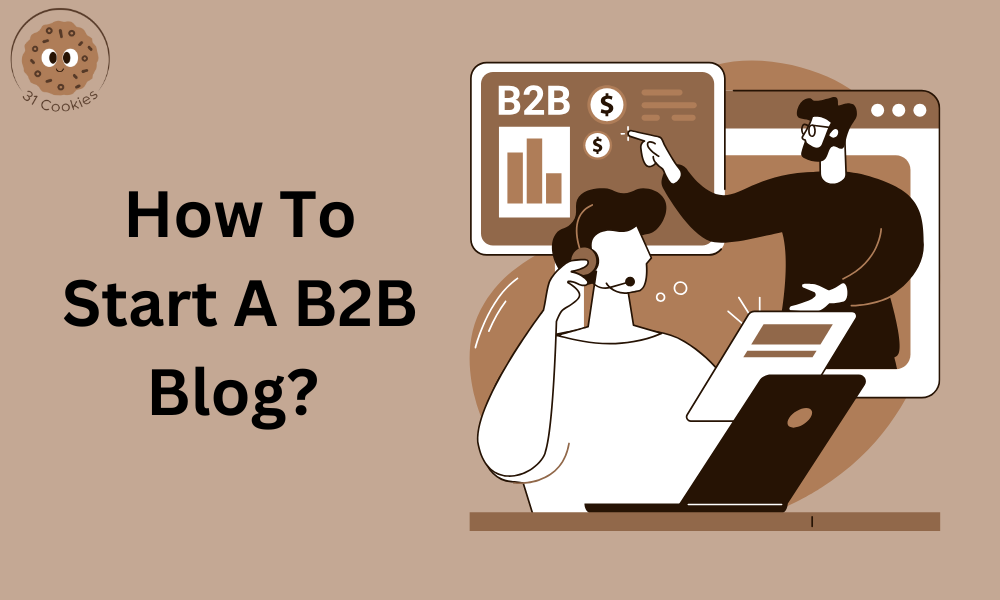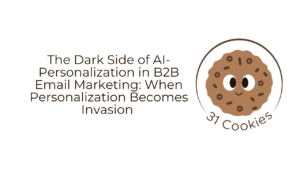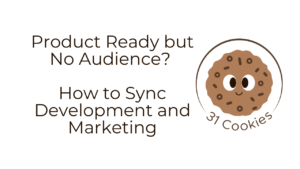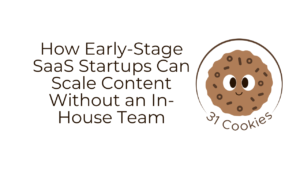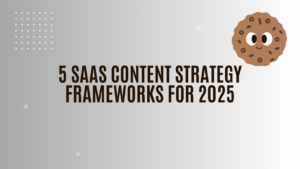We pitched to a SaaS founder a few months ago who said, ‘We don’t need a blog. We’ll just run ads.’ Now, they’re scrambling to publish content after realizing their competitors’ blogs are winning customer trust and clicks.
The importance of B2B blogs is no secret anymore. But where do you start?
In this blog, we’ll explore everything you need to know about starting a B2B blog to make an impression and leave your audience wanting more. 🎯
TL;DR
Here are the steps to start a B2B blog:
- Define your target audience
- Identify the right topics
- Craft engaging headlines and titles
- Write informative B2B content
- Optimize for search engines
- Promote your content
- Track goals and KPIs
- Outsource your content development
What Makes a Good B2B Blog?
A B2B blog, or Business-to-Business blog, is content businesses create for other related businesses. The primary goal is to engage and inform other companies about products, services, or industry insights to help make informed decisions.
But what makes a good B2B blog? Here are some points to keep in mind:
- Talk to your audience: Write about the things your readers care about—what challenges they face and what solutions they’re searching for
- Be helpful: Your blog isn’t just for you; it’s for them. Share advice, tips, and insights they can use to solve problems or make their work easier
- Write clearly: Good writing isn’t fancy; it’s easy to read. Use a tone that feels professional but approachable, like you’re talking to a colleague, not delivering a lecture
- Think about SEO: Sprinkle in relevant keywords where they naturally fit. This helps more people find your blog without turning your writing into a robot’s monologue
- Keep it interesting: Don’t write the same type of post repeatedly. Mix in how-to guides, list posts, case studies, and even visuals like infographics to keep readers engaged
- Stick to a schedule: A blog isn’t a ‘set it and forget it’ deal. Post regularly so your readers know they can count on you for fresh, useful content
- Use visuals wisely: Pictures, charts, and graphics break up walls of text and help explain tricky concepts. Think of them as the seasoning to your written content
- End with purpose: Don’t let your posts trail off. Wrap things up with a clear next step, whether it’s reading another article, downloading a guide, or getting in touch
📌Example: ClickUp has excellent blogs that blend practical advice about project management and productivity with subtle nods to their software. It’s useful, not salesy.
How to Create a Strong B2B Content Strategy?
Building a strong B2B content strategy isn’t just about churning blog posts or adding LinkedIn updates. It’s about creating a roadmap that connects your business goals with your audience’s needs.
Here’s a solid strategy that will help you keep growing. 📃
1. Define your target audience
You must understand who you’re talking to to create content that connects. Here are some ways to define your audience:
- Use data: Use market research to learn about your audience’s demographics, preferences, and behaviors
- Build user personas: Develop profiles that reflect your customers’ real challenges and goals
- Ask your team: Tap into insights from sales, customer service, and product teams to learn more about your customers’ needs
2. Identify the right topics
Your content should reflect what your business does best. Try to pick evergreen topics that your audience will keep searching for even after years of publishing.
Here are some tips to keep in mind:
- Focus on your strengths: Highlight how your product or service solves specific problems
- Stay current: Keep up with industry news and trends to stay relevant
- Make a plan: Outline what content you’ll create, how often you’ll publish, and where you’ll share it
3. Craft engaging headlines and titles
Good titles make all the difference. Here are some hacks to write compelling headlines to attract audiences:
- Keep it short and simple: Aim for headlines that are easy to read and understand at a glance.
- Use numbers: Start with numbers to structure your headline and grab attention
- Ask a question: Pose a question your audience wants answers to, like ‘What’s the Secret to Writing Headlines That Work?’
- Be specific: Vague headlines don’t stand out. Focus on precise, actionable details
- Create urgency: Add a time element or action that encourages readers to click now, for instance, ‘Last-Minute Tips to Nail Your Next Marketing Campaign’
- Use power words: Words like ‘ultimate,’ ‘proven,’ or ‘essential’ can make your headline more persuasive without overhyping
- Appeal to emotions: Connect with readers by addressing their challenges or desires, like ‘Tired of Low Engagement? Here’s How to Fix It’
- Focus on benefits: Highlight what readers will gain from your content
- Try alliteration: Repeating sounds can make your headline catchy, e.g., ‘Perfectly Practical Productivity Hacks’
- Test your headlines: Create a few variations and see which one performs best using tools like A/B testing or headline analyzers
4. Write informative B2B content
Great content doesn’t just inform—it connects. Focus on your audience’s challenges and provide practical solutions they can use. Real-life examples or case studies are compelling, showing how your product or service works and making your content more relatable.
Keep readability in mind. Break up long text with bullet points, subheadings, and visuals like charts or infographics. This makes your content easy to skim while engaging those wanting to dig deeper.
5. Optimize for search engines
SEO doesn’t have to be intimidating. There are some simple techniques you can follow for basic search engine optimization. Keep in mind. 👇
- Find the right keywords: Use tools like Google Analytics to discover terms your audience is searching for
- Be strategic: Place keywords naturally in your content and optimize titles and meta descriptions to boost visibility
6. Promote your content
Creating great content is just the start. Ensure it reaches the right people.
- Offer gated resources: Exchange valuable downloads, like guides or whitepapers, for email addresses
- Use newsletters: Share your latest content directly with subscribers
- Leverage social media: Post on platforms where your audience is active
7. Track goals and KPIs
Monitoring key performance indicators (KPIs) is essential for assessing the success of your B2B content marketing efforts. Track metrics like website traffic, lead generation rates, and engagement levels to determine what’s working and where adjustments are needed.
This data-driven approach enables you to refine your strategies and achieve better results.
8. Outsource your content development
Instead of putting your team under the stress of regularly creating compelling content, hiring another agency for you is better. They have professionals with experience in the industry, ready to give you everything you need.
Here are some advantages of outsourcing your content development:
- Showcase different perspectives: External writers bring fresh ideas and diverse viewpoints, enriching your content and appealing to a broader audience
- Save money: Outsourcing helps you manage costs more effectively, avoiding the expenses associated with hiring and training in-house staff
- Produce more: With additional resources, you can increase your content output without compromising quality, ensuring a consistent presence in your industry
Klever Kookie is one such agency that can help you streamline your content development, enhance quality, and generate leads. You can access our expert writers who understand the nuances of B2B marketing. We focus on creating tailored, actionable content that speaks directly to your target audience.
Create A Clever Content B2B Blog With Klever Kookie
Starting a blog is an exciting way to share your expertise and engage with your audience. Just follow these steps: define your goals, create valuable content, and stay consistent, and you’re on your way to making a real impact.
If writing isn’t your thing or you want to take your content to the next level, Klever Kookie is here to help. We craft compelling, targeted content that speaks directly to your audience.
Reach out to us today! ✅

